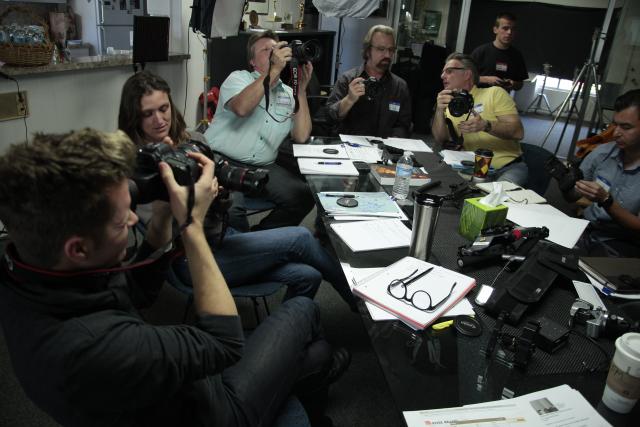I’ve had the good fortune to film many princesses in my career…usually from the air.
There are a number of camera rigs to remove the bumps and wiggles from aerial camera shots. The Cineflex gyro-stabilized camera mount is awesome but it takes all the thrill out of hanging out the doorway over Istanbul to shoot handheld of the Grand Princess’ Inaugural Voyage.
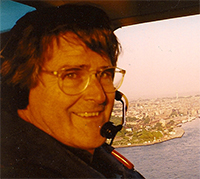
(left) Yours truly enjoying the view of the Seven Hills of Istanbul. Do I look worried? Invigorated, yes. Worried?
What’s to worry about? Stepping out on to the rails with nothing holding you but a climbing strap from taking a nice long dive into the Mediterranean. Hah! I spit in the face of fear !
Anyway, once you fly through the air getting great shots, it’s hard to go back to earth. You go a little insane. The shots looks so pretty, you just can’t stop.
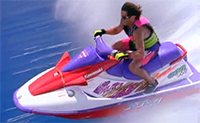
(above) That’s me in the Bell Long Ranger shooting in St. Thomas. Rod Tinney, who could fly (and did) fly his helicopter between two buildings with a foot on either side) was my precision pilot. Best in the world. He could push the envelope…but ALWAYS safely.
Or (below) hanging out the door to shoot a cruise liner. (Yes, we’re on a collision course.)
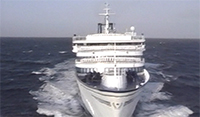 Rod’s again the pilot. We are approaching the bow of the ship four feet off the water at 90 knots closing speed, then at the last second we’ll rise up and over the bow to see the crew on the flying bridge and over we’ll go looking down the smokestacks.
Rod’s again the pilot. We are approaching the bow of the ship four feet off the water at 90 knots closing speed, then at the last second we’ll rise up and over the bow to see the crew on the flying bridge and over we’ll go looking down the smokestacks.
Then, we all throw up and try it again.
We only hit the antenna once. I was glad after take 14 we had the shot, because I kept imagining the dent we’d make in the bow of the newly-painted ship and I wondered would they put a plaque up in our honor or just buff it out and paint it over. I think the latter.
Much more preferable is the Tyler Major Mount which enabled me to get rock solid shots of the Kawasaki Jet Ski dashing across Meghan’s Bay at 50 mph (below). With the Major Mount you can stay mostly inside the chopper which keeps the wind stream from buffeting the camera.
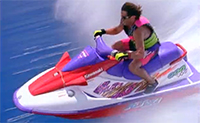
The camera was so well-balanced and steady I could almost take my hands off the hand grips and watch it float with the action, so I could keep the Jetski in almost perfect framing. Nelson Tyler also makes nose mounts for high speed tracking shots or Middle Mounts for out the door shooting with lighter cameras. And Mini Gyro mounts for Canon 5D sized cameras for shooting off the back of motorcycles and boats and such.
The Cineflex mount is probably the most stable and most expensive. But you are unhampered by wind (which pushes the tail boom around and makes aerials difficult). It’s great but can get confused with sudden chopper maneuvers.

So, if you’re going for flat and smooth and level, this is the choice. Here’s a link to a sample of Cineflex work. It’s after the opening interviews with young pilots talking about their first solo flight.
HOVERCAM - And now walks on the stage the humble HoverCam, which takes just the camera up in the air while the flyer and camera person stay down below. It’s all controlled remotely and can film not only outside but inside. And these are the shots we’re planning for the Princess ships today, i.e. flights down the beautiful public spaces and soaring shots ascending through the Atrium on the new Royal Princess.j
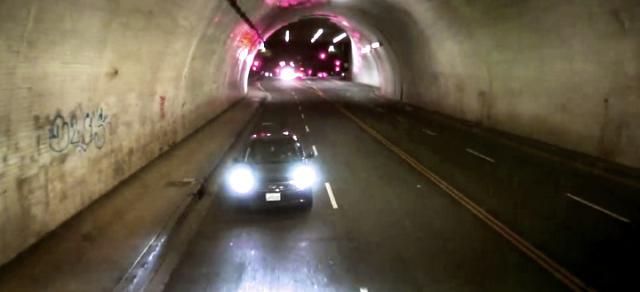 (left)- the Robert Hogg’s HoverCam flying through the L.A. tunnel. That’s a shot you can’t get with a chopper-mounted camera.
(left)- the Robert Hogg’s HoverCam flying through the L.A. tunnel. That’s a shot you can’t get with a chopper-mounted camera.
(We’ll be woking with the HoverCam at our August 24 & 25 Cine Boot Camp, for any who are interested.)
So, pop quiz.
Q. What are the six ways to film a Princess?
1) Out the door, hand-held (cheapest and most dangerous)
2) Nose Mount (rock steady, high speed, no wind buffeting but you can still get a bug on the lens)
3) Middle Mount (Lighter cameras, operate out of wind stream.)
4) Major Mount (Heavier cameras, operate out of wind stream.
5) Cineflex gyro stabilized ball (Have a beer while watching the Cineflex operator does all the work.)
6) HoverCam (flies lower than 300 feet over populated areas AND it can fly right through a hallway.)
Fletcher Murray is president of The Association and an overall great guy. I know him personally. He’s been spending his weekends training other camera people at the Cine Boot Camps for the last four years. He asked me to ask you if you’d like to read more of his self-serving, boring stories of his career, as long as he promises to keep them short and with lots of pictures. So email info@theassociation.tv and cast your vote.
- See more at: http://blog.theassociation.tv/#sthash.pO8ZJd6I.dpuf

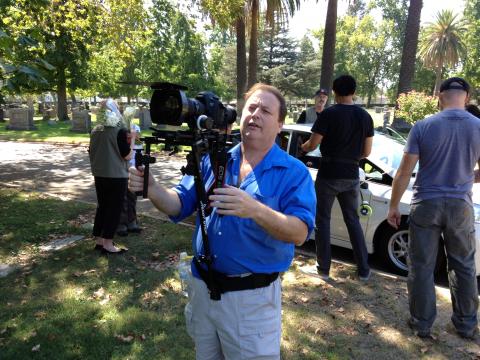

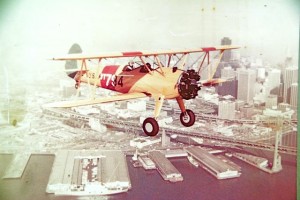 My First Professional Photo Shoot
My First Professional Photo Shoot
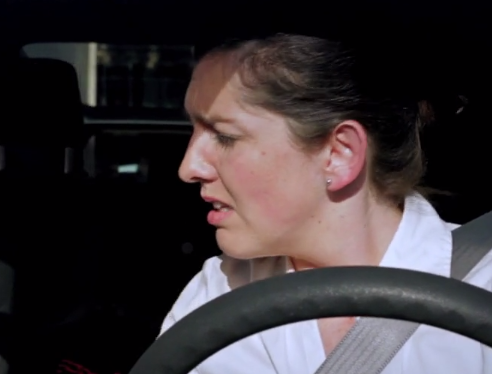

 It is of Jan Zizka, a Czech general and Hussite leader, who fought in the Battle of Grunwald in 1410, with a Polish-Lithuanian army in defeating the Teutonic Order.
It is of Jan Zizka, a Czech general and Hussite leader, who fought in the Battle of Grunwald in 1410, with a Polish-Lithuanian army in defeating the Teutonic Order.

